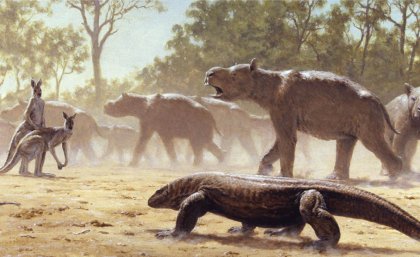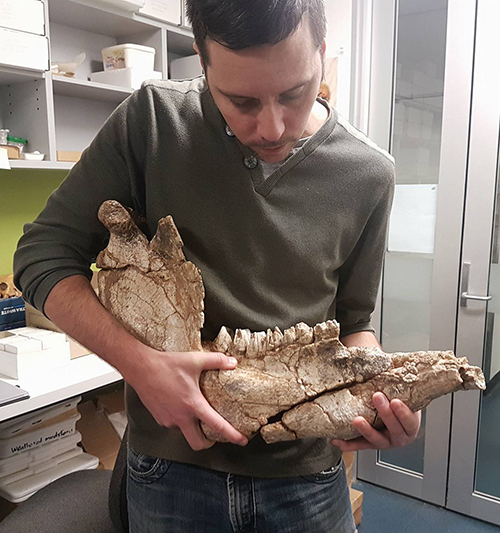
A giant prehistoric Ice Age marsupial related to wombats and koalas has been discovered to be the only marsupial known to have ever followed annual seasonal migration.
Likening it to “Australia’s Ice Age Serengeti”, the University of Queensland’s Dr Gilbert Price tracked the now extinct megafauna diprotodon – a three-tonne beast up to 1.8 metres tall and 3.5 metres long – using fossils and geochemistry tools.
Dr Price’s team have shown that the Ice Age diprotodon would make seasonal, round-trip pilgrimages up to 200 kilometres in search of food.
“We were able to do all this by analysing tiny samples from this giant’s tooth,” Dr Price said.
“It goes back to that old saying ‘you are what you eat’, because the chemicals of the food they consumed became part of their teeth.
“But it’s also true that ‘you are where you ate’, especially if you are a plant eater, because the geochemistry of the soils where plants grow also become fixed into a herbivore’s tooth.
“Why this is exciting is, although marsupials like kangaroos might migrate on a nomadic basis, there are none today that follow set seasonal patterns.
“It seems that the ecology of Ice Age Australia is so different to that of today.”
Dr Price describes the ecology of Australia as “similar to Noah’s Ark”, given species and ecosystems developed largely in isolation and at their own pace, cast adrift from other connected land masses.
He said the extinction of the diprotodon may provide some insight about the possible threats to contemporary migratory mammals and the consequences if they are wiped out.

“What are the implications of losing a major migratory animal like a zebra or wildebeest?” Dr Price said.
“Diprotodon was also a big herbivore that would have been capable of eating you out of house and home.
“How does taking an animal like that out of the ecosystem impact the vegetation and the numbers and predatory order of other animals?
“Diprotodons would have been a food source themselves, and their absence would have far-reaching impacts.”
Dr Price’s research was the convergence of a long-held interest in diprotodons and his proximity to the multi-million dollar Centre for Geoanalytical Mass Spectrometry (CGMS), based at UQ.
The CGMS is a facility which allows Queensland’s major research institutions to combine resources and knowledge to purchase and operate advanced analytical laboratories which perform functions such as dating and tracking human and animal evolution.
Dr Price’s study, Seasonal migration of marsupial megafauna in Pleistocene Sahul (Australia-New Guinea), has been published in journal Proceedings of the Royal Society of London B.
Media: Dr Gilbert Price, g.price1@uq.edu.au, +61 439 876 005, @TheFatWombat; UQ Communications, communications@uq.edu.au, +61 7 3365 3439, @UQ_News.
Secondary image caption: Dr Gilbert Price holds a diprotodon jaw, complete with teeth, in his UQ laboratory.
Media can download the below video via the link by clicking here.
Giant Australian marsupials were like no other from The University of Queensland on Vimeo.
.jpg)











